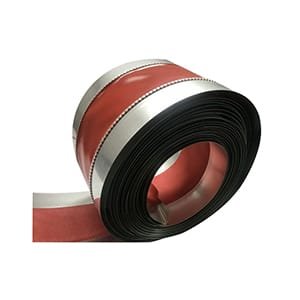Introduction
In extensive industrial and commercial HVAC systems, it is essential to control noise and vibrations to ensure a comfortable and efficient atmosphere. However, directly linking ductwork to equipment can result in increased noise levels, energy inefficiencies, and accelerated wear on components. Flexible duct connectors provide a targeted solution by isolating vibrations, retaining air within the system, and minimizing wear on equipment. As such, they are vital components in contemporary HVAC installations.
What exactly is a Flexible Duct Connector?
A flexible duct connector serves as a unique interface that is installed between machinery and duct systems to mitigate noise and vibrations in HVAC and industrial environments. Made from a combination of fabric and sheet metal, this component provides both flexibility and durability while ensuring effective air containment, making it particularly suitable for use in commercial and industrial settings.

Flexible Duct Connectors are composed of a pliable joint, typically made from fabric materials, that is secured between two sections of sheet metal. In contrast to rigid connectors, these components facilitate minor movements or adjustments in alignment, effectively creating a smooth transition between the equipment and the duct system.
Advantages of Utilizing Flexible Duct Connectors
Flexible duct connectors offer numerous benefits, particularly in demanding settings. Here are the key reasons they are essential:
- Noise and Vibration Mitigation: These connectors effectively dampen vibrations from fans and blowers, significantly reducing noise levels transmitted through the duct system. This feature is vital for ensuring a comfortable environment in expansive facilities.
- Accommodating Flexibility and Misalignment: Flexible duct connectors can handle minor misalignments between equipment and ductwork, alleviating stress caused by thermal expansion or slight positional changes.
- Robustness and Energy Efficiency: Constructed from high-quality materials, these connectors provide long-lasting durability while ensuring proper air containment to minimize energy losses, thereby enhancing overall system efficiency.
- Tailored Customization Options: Available in a range of sizes, materials, and temperature tolerances, flexible duct connectors can be customized to meet specific industry needs, ensuring optimal performance under varied conditions.
Versatile Uses of Flexible Duct Connectors
Flexible duct connectors play a crucial role across multiple sectors, particularly in scenarios where managing vibration and noise is essential. Key applications encompass:
- HVAC Systems: Widely utilized to mitigate vibrations and sound generated by fans, blowers, and various mechanical parts.
- Automotive and Aerospace: Implemented in ventilation systems that necessitate flexibility while prioritizing vibration management, such as exhaust systems and HVAC installations.
- Industrial Ventilation: Utilized in manufacturing facilities and industrial environments to attenuate noise and vibrations from substantial machinery, thereby enhancing workplace conditions and extending the lifespan of the systems.
Understanding this difference is essential for engineers and contractors who need to select the appropriate components for vibration control.


Common Applications of Flexible Duct Connectors
Flexible duct connectors are invaluable in various industries, especially where equipment vibration or noise must be controlled. Some typical applications include:
- HVAC Systems: Used extensively to reduce vibrations and noise from fans, blowers, and other mechanical components.
- Automotive and Aerospace: Applied in systems where ventilation requires flexibility, but vibration control is critical, such as exhaust and HVAC systems.
- Industrial Ventilation: Employed in factories and industrial sites to control noise and vibrations from large equipment, improving working conditions and system longevity.
What Factors Should You Evaluate When Selecting a Flexible Duct Connector?
When choosing a flexible duct connector, it is important to take the following aspects into account to effectively address your application’s requirements:
- Size and Compatibility: Verify that the connector aligns with the specifications of your ductwork and equipment.
- Material Suitability: Opt for materials that can endure the specific temperature, humidity levels, and potential chemical interactions of your environment.
- Heat Resistance: For applications exposed to high temperatures, select materials that are resistant to rapid degradation.
- Quality and Durability: Prioritizing high-quality connectors can lead to reduced long-term expenses and enhanced reliability of the system, particularly in large-scale operations.
By considering these factors, you can ensure optimal performance and extended lifespan for your duct system.
Summary
Flexible duct connectors are essential components in HVAC, automotive, and industrial applications. They serve to minimize noise transmission, decrease wear on systems, and improve energy efficiency. By choosing the appropriate flexible duct connector, professionals within the HVAC, construction, and manufacturing sectors can optimize system functionality, safeguard their investments, and create a quieter and more comfortable atmosphere in their facilities.



